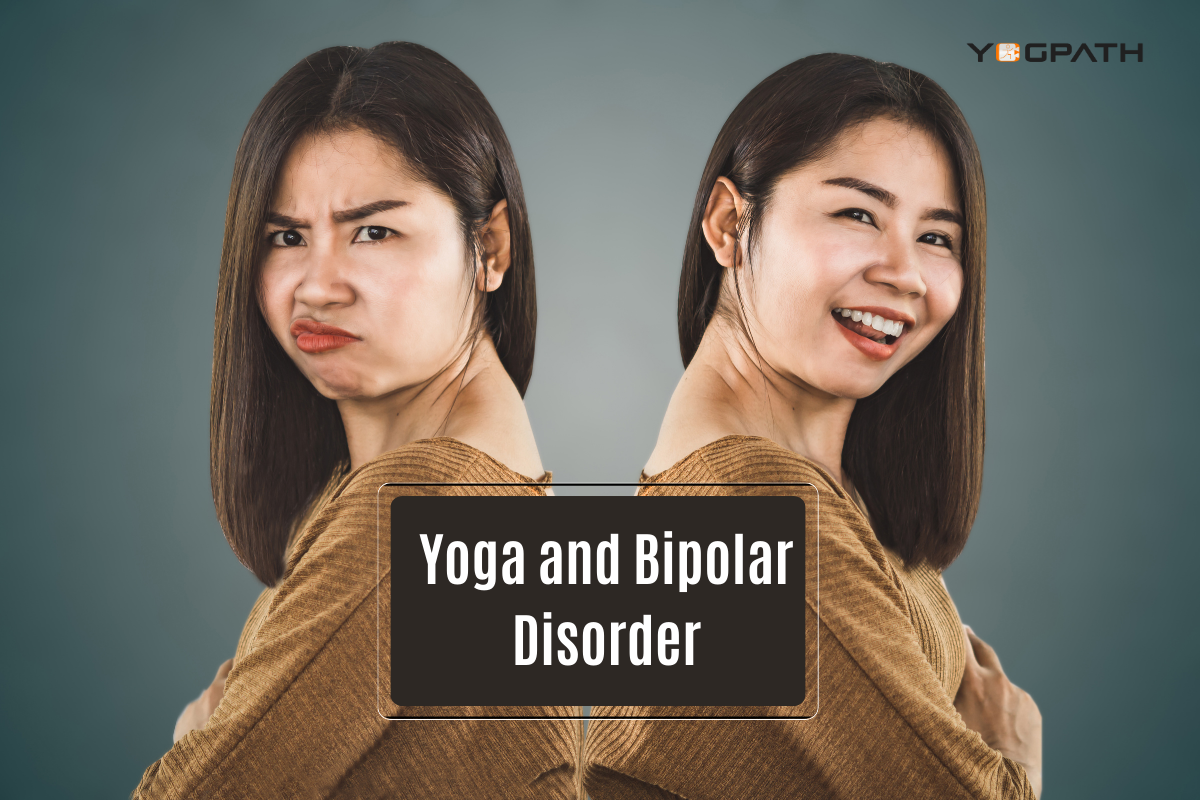
Bipolar disorder is a type of mood disorder that is marked by extended bouts of intense mania and depression. A mental health disease called bipolar illness can affect your energy, mood, and overall ability to perform. “Mood episodes,” which are periods of extremely strong emotions, are experienced by people with bipolar disorder. Bipolar disorder has been demonstrated to worsen under stress. The management of bipolar disorder may benefit from anything that lowers stress and anxiety. A comprehensive bipolar illness treatment programme may benefit from including yoga. It combines active, contemplative, and emotional components that might aid in managing your disease.
For many people, yoga is calming. It combines controlled breathing, meditation, and focused movement. You could experience both relaxation and vitality after consuming this mixture. Yoga usually involves stretching and balancing your body in specific stances, called poses, while practising controlled breathing and meditation. This combination often leaves people feeling calmer, yet invigorated. It may help you manage stress. Stress can trigger mood episodes if you have bipolar disorder.
Yoga Poses to control Symptoms of Bipolar Disorder
Garudasana
Garudasana, also referred to as the Eagle position, helps you concentrate while reducing tension. It might help you feel more balanced. This yoga pose will help you become more flexible. It extends your shoulders, legs, hips, and calves.
Konasana Upavistha
This yoga position soothes the neurological system and the mind. You can learn to be peaceful by doing it consistently. It is also referred to as Seated Wide-Angled Pose and is said to extend your arms, legs, hips, and spine while stimulating your abdominal organs. Notably, you should practise this stance first thing in the morning while feeling empty.
Dandasana
Dandasana, also referred to as the Staff Pose, is a simple asana that has several advantages. Your brain cells can relax with this yoga pose for beginners. It needs to be done first thing in the morning, without food. Your body’s alignment and awareness of your body improve as a result. Your spine might also be strengthened by it.
Paschimottanasana
Paschimottanasana is a fantastic way to decompress. It is also referred to as the “Satuated Forward Bend Pose,” and it can be used to relieve stress, anxiety, despair, rage, etc. Your blood pressure is regulated by this yoga pose. Additionally, it provides a great stretch for your hamstrings and lower back.
Yoga shouldn’t take the place of conventional treatments for bipolar disorder. You should continue taking any medications prescribed by your doctor. Your doctor may also recommend alternative therapies; such as talk therapy.
How Can Meditation Aid in Managing Bipolar Disorder?
For those who have bipolar disorder, daily life can be challenging, and it can be challenging to succeed in class or at work. Additionally, interpersonal interactions may suffer. The goal of bipolar disorder treatment is to help you manage your mood by balancing it and reducing the ups and downs. You can use meditation as a tool to aid in this attempt. People with bipolar disorder may benefit from meditation because it’s a simple, healthy way to unwind and lower stress.
Even while bipolar disorder cannot be cured, including meditation to your treatment regimen may help you manage your mood swings. Stress can make bipolar disorder worse, yet having bipolar disorder is already stressful. Meditation and other relaxation methods can help you manage your bipolar disorder-related stress and keep your mood in check.
Mindfulness meditation is one style of meditation in particular that can be beneficial. This technique, which has gained popularity in recent years, calls for you to “pay attention” to your meditation and to be objectively conscious of your thoughts and feelings.
It aids in the development of awareness of troubling ideas and emotions, allowing you to step back from them rather than attempting to alter or correct them.
While there is no quick remedy for bipolar disease, meditation can be beneficial over time. Bipolar disorder sufferers may benefit temporarily from medication, and long-term benefits of meditation include the promotion of more stable moods.
If you have bipolar disorder, talk to your doctor about any additional therapies you might require, such as medication or psychotherapy. Meditation cannot substitute standard therapy for this condition.
How Exercise Is Beneficial for Bipolar Disorder?
Medication and counselling are commonly used to treat bipolar disorder. However, research has shown that some patients may benefit more from their treatment if they include exercise in it.
Exercise generally has a favourable impact on people’s moods. Endorphins, also referred to as the “feel-good” chemicals in the brain, are released by exercise. Increased endorphin levels can improve your mood over time. For this reason, exercise is frequently suggested for depressed individuals. Exercise can also aid in stress management.
According to one study in the review, exercise may help certain bipolar illness sufferers with hypomanic symptoms, which are less severe than manic symptoms. Additionally, it promoted sounder sleep. The study also revealed that some people can find specific routines to be tranquil. These physical activities include swimming, running, and walking.
Although bipolar disorder is a lifelong diagnosis, it is manageable with the right care. Although medication is frequently the first line of treatment for bipolar disorder, exercise can also be beneficial. In many instances, it can aid in easing bipolar disorder symptoms and minimise the elevated chance of developing certain medical disorders that are connected to bipolar illness.
And lastly, make sure to follow these steps:
- Before beginning a new fitness routine, especially if you are new to exercising, see your doctor.
- Stop doing anything that hurts or that makes your symptoms worse, then call your doctor.
- If you discover that your manic symptoms worsen after beginning a new fitness regimen, be sure to consult your doctor.
- Find the best fitness programme for you by working with your doctor and keeping in mind that different forms of exercise are effective for different people.











